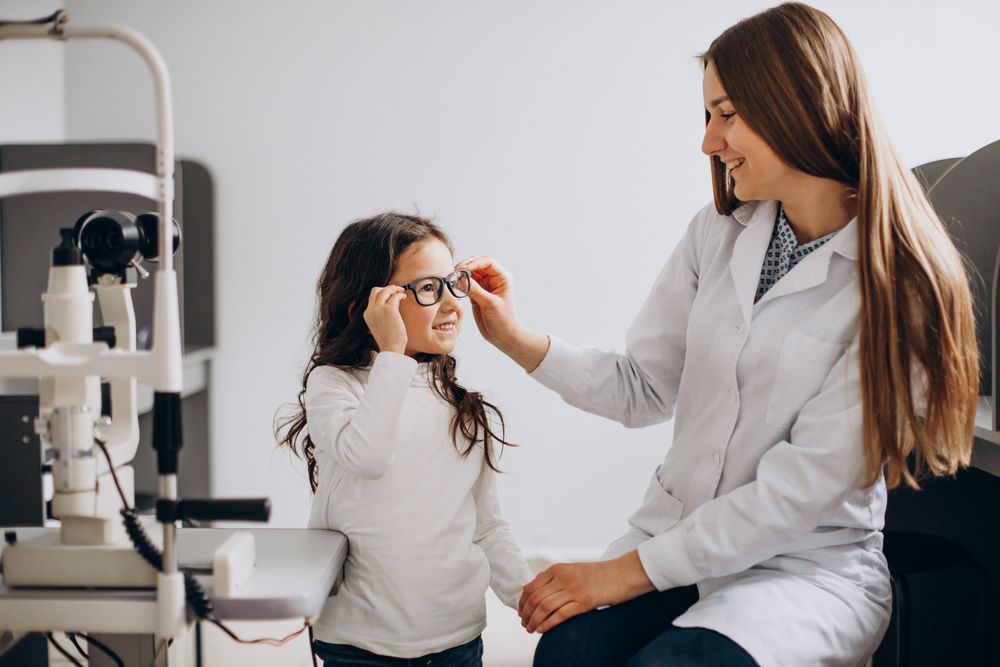
Have you noticed your child squinting at the television? Or perhaps they struggle to read the whiteboard at school? These could be signs of nearsightedness, or myopia. This condition makes faraway objects look blurry and unclear, but things up close, like reading a book, often remain clear.
What Is Myopia?
Myopia happens when your child’s eye grows a little too long. Because of this, light focuses in front of the retina as opposed to directly on it. This affects how an individual sees distant objects, as they appear to be out of focus. Most people begin to experience myopia between the ages of six and fourteen, and as children’s eyes grow, the condition can worsen.
Why Should Parents Be Concerned About Myopia?
As a parent, it is natural to worry when you notice your child’s vision changing. The good news is that myopia control can help slow down myopia progression. The more you slow it down, the more you protect your child’s eye health over time.
How Can Myopia Progression Be Controlled?
While myopia cannot be reversed once it develops, control strategies can help to slow its progression. This means your child will likely need less powerful glasses as they grow.
Special Contact Lenses
One popular method for controlling myopia is the use of special contact lenses. MiSight daily disposable lenses are designed to slow the progression of myopia. They alter how light focuses on the retina. Many children find them comfortable and easy to wear.
Ortho-K Lenses
Another effective method is Ortho-K lenses. These lenses are worn while your child sleeps. They gently reshape the cornea overnight, so your child wakes up with clear vision during the day—without needing glasses. This helps manage myopia progression without the need for daily lenses.
Low-Dose Atropine Eye Drops
Low-dose atropine eye drops are another helpful tool. These prescription drops are used once a day, and they help to relax the eye’s focusing mechanism. These eye drops slow the growth of the eye, making myopia control more manageable. Many parents find this option safe and effective for their children.
Additional Steps to Help Slow Myopia Progression
Spend Time Outdoors
Encourage your child to spend at least 90 minutes outside each day. Sunlight exposure and looking at distant objects both help slow down the progression of myopia. Getting fresh air and spending time in nature is beneficial for more than just your child’s eyes.
Managing Screen Time
It is also important to manage screen time and close-up activities. Encourage your child to take regular breaks when reading or using digital devices. Let them follow the 20-20-20 rule. This rule encourages one to pause every 20 minutes, look at something 20 feet away for at least 20 seconds. This helps give your child’s eyes a much-needed rest.
When Should You See an Eye Doctor?
If you notice your child squinting, complaining of blurry vision, or having trouble seeing from a distance, it is time to schedule an eye exam. Early detection of myopia is key to managing it effectively.
For more on myopia control, visit Glastonbury Eye Care at our Glastonbury or West End, Connecticut offices. Call (860) 791-4600 or (860) 236-5831 to book an appointment today.
Sources:
https://www.aao.org/eye-health/diseases/myopia-control-in-children
https://www.uhcw.nhs.uk/download/clientfiles/files/Patient%20Information%20Leaflets/Surgical%20Services/Ophthalmology/Information%20for%20Parents%20of%20Children%20with%20Myopia%20.pdf





